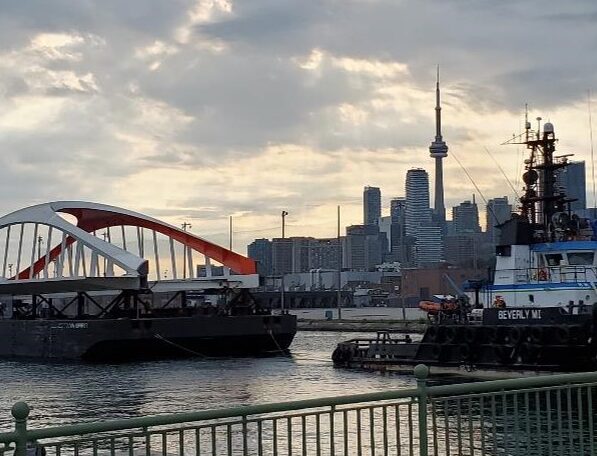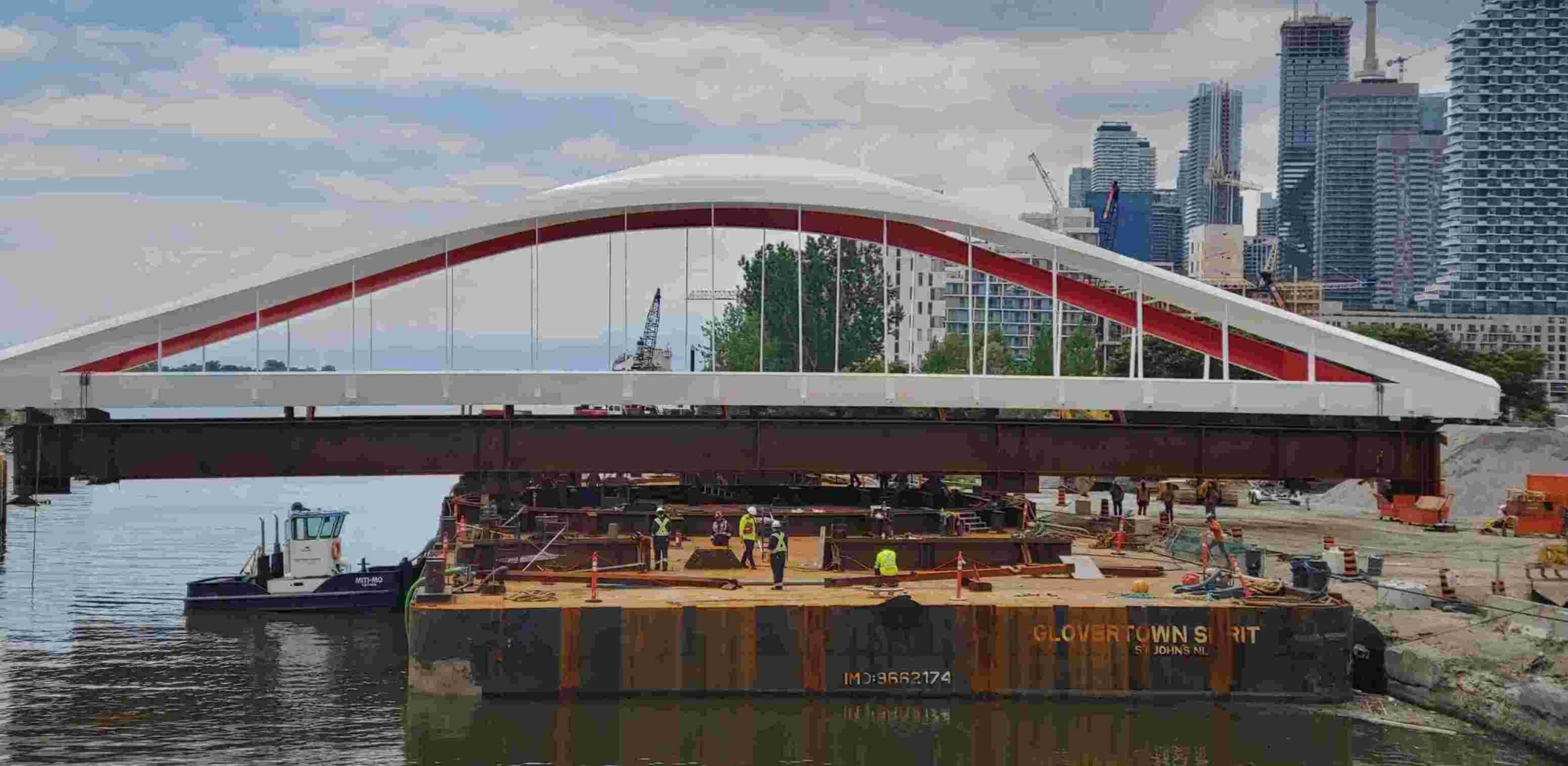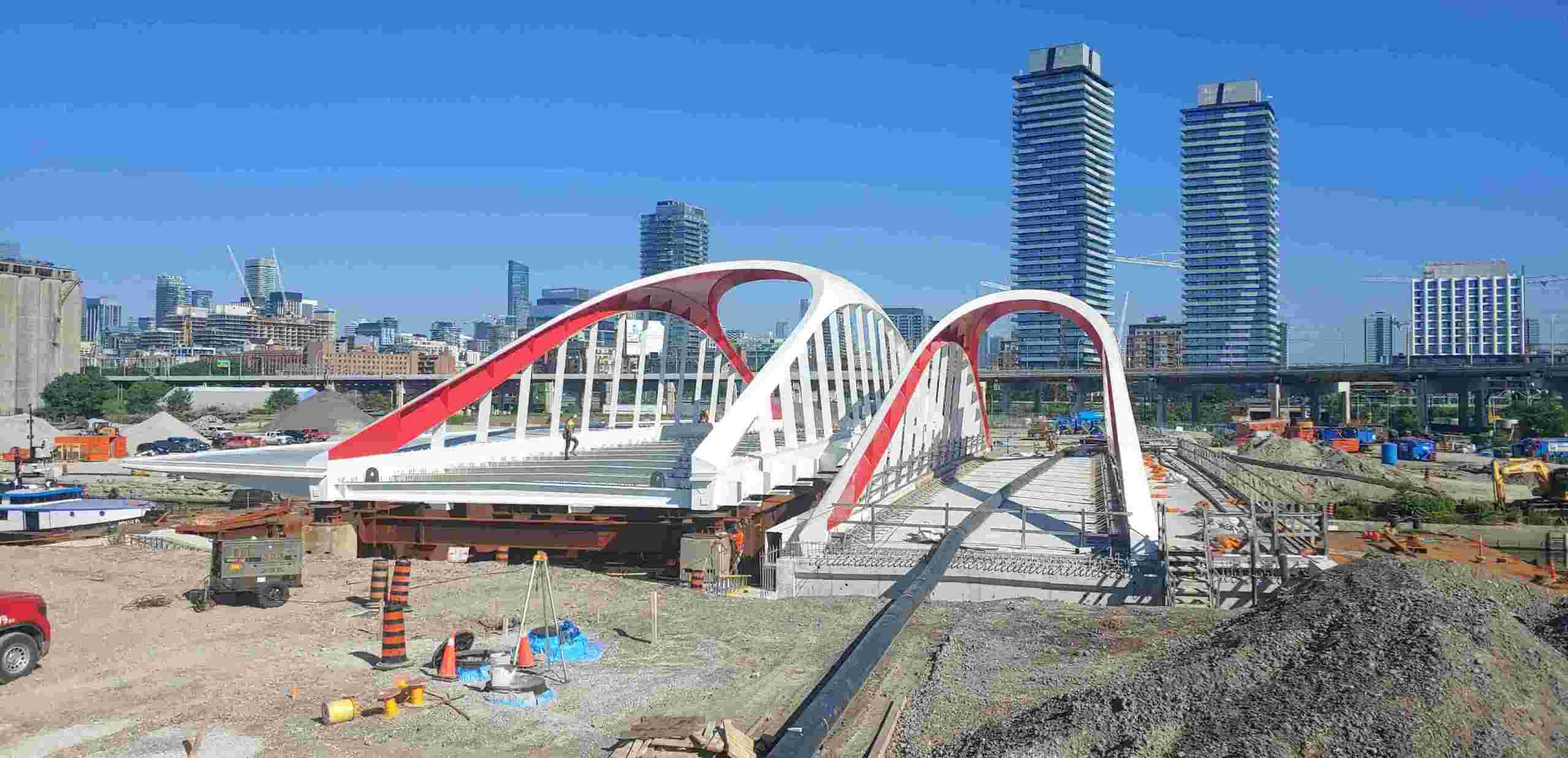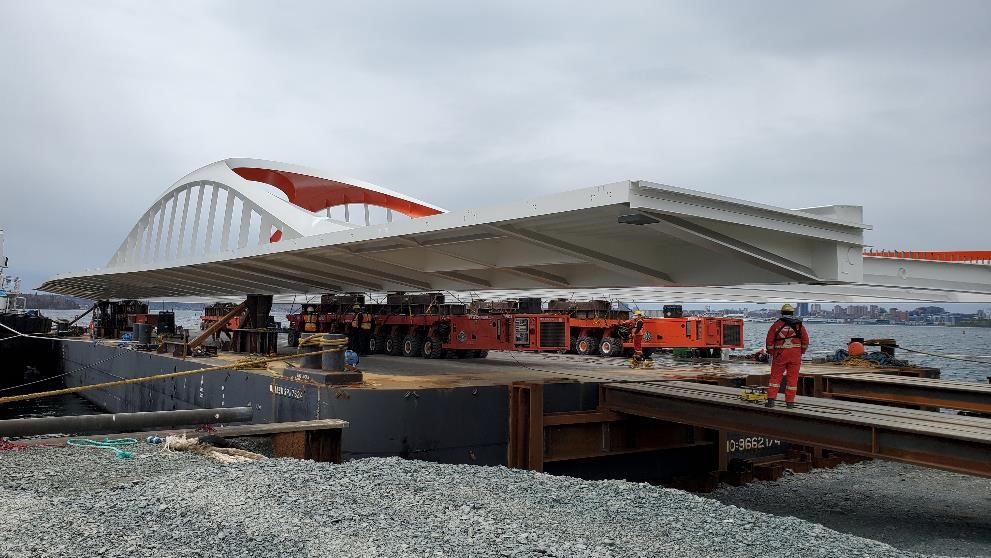




Port Lands Flood Protection and Redevelopment – Bridge Construction Engineering, Toronto, ON
LOCATION: Toronto, ON
CLIENT: Cherubini Metal Works
VALUE: $50 M (total capital cost)
YEAR: 2019 - present
ROLE: Bridge Construction Engineer, Quality Verification Engineer & Geotechnical Engineer
CATEGORY: Bridge
Waterfront Toronto undertook a major project by creating a naturalized river valley for the mouth of the Don River, reclaiming an industrial zone for mixed-use development and the construction of significant park and green space. The new Don River channel and updated road and LRT required the construction of four new bridges. There are two new bridges that will cross the Keating Channel to replace the existing Cherry St North Bridge (one for traffic and one for LRT), and new bridges on Cherry St (near the southern project extents) and Commissioners Street to cross the new river valley. Harbourside Engineering was retained to provide Erection and Fabrication Engineering and Quality Verification Engineering services for the fabrication, transportation and erection of the steel arch bridges.
Scope of Work
Harbourside was retained by Cherubini Metal Works to provide erection engineering services for the fabrication, transportation and erection of the four steel arch bridges. It was determined at the beginning of the project that the most economical method for fabricating and erecting each of the four new bridges, while providing the high quality fabrication and paint finish that was required for the project, was to complete as much of the fabrication and coatings work as possible in the fabrication shop, while utilising accelerated bridge construction techniques (ABC) to minimize the amount of fabrication, assembly and coatings work to be done on site. To meet this requirement, ABC erection and transportation methodologies were developed for each of the bridges that allowed the fabricator to complete almost all steel fabrication and assembly of the bridge superstructures in the fabrication shop.
During fabrication Harbourside provided the fabricator with geometry control procedures and designed temporary works that were required during the assembly of the bridge superstructures. Harbourside also coordinated with multiple Self Propelled Modular Transporter (SPMT) suppliers for moving the bridges from the fabrication shop to the coatings tent, onto the barge for transport to Toronto, and unloading of the bridge superstructures in Toronto.
For the new 56 m Cherry Street Bridges that cross the Keating Channel (one vehicular and one LRT bridge), the bridge superstructures were loaded onto large girders and a turntable, which was mounted to the barge deck in Dartmouth. Once the barge arrived in Toronto, the bridge was rotated 90 degrees so that it was perpendicular to the barge and subsequently moved into position above the abutments. The barge was then ballasted down so that the bridge superstructures were supported by the new abutments.
The four span Commissioner’s Street Bridge was transported to site in two halves, which each comprised of a 56 m main span and a 20 m approach span. Each half was loaded onto the barge using SPMTs in Dartmouth, secured for transit to Toronto, and then unloaded using SPMTs in Toronto and driven along a temporary engineered haul route to the newly built abutments. Once both halves of the bridge were in Toronto, they were aligned, and the center splice was welded together to create a single continuous superstructure.
The three span Cherry Street South bridge structure was too long to ship fully assembled on the barge, so the approach spans were temporarily suspended from below the main span during transit. The bridge superstructure was dynamically offloaded using SPMTs in Toronto, the approach spans strategically lowered into the proper plan position / flanking the main arch span and then all three spans were supported on temporary blocking and footings while the approach spans were welded on each end of the main arch span. The fully welded superstructure was then moved into position over the permanent piers and abutments using SPMTs and placed on the permanent bearings.
For each of the bridges, Harbourside completed the full erection phasing, designed all temporary works for the fabrication, transport and erection stages of construction including SPMT blocking, sea lashing, jump bridges and abutments for loading and unloading the barge, turntables and transfer beams. Additionally, Harbourside provided Quality Verification Engineering services for the fabrication and erection of all four steel arch bridges.
Harbourside also provided geotechnical design services for the offload haul routes and temporary construction / staging areas. The haul route design required the use of geo- grid to provide a stable driving surface in the constrained site, which bordered the edge of the property and an area of active excavation.